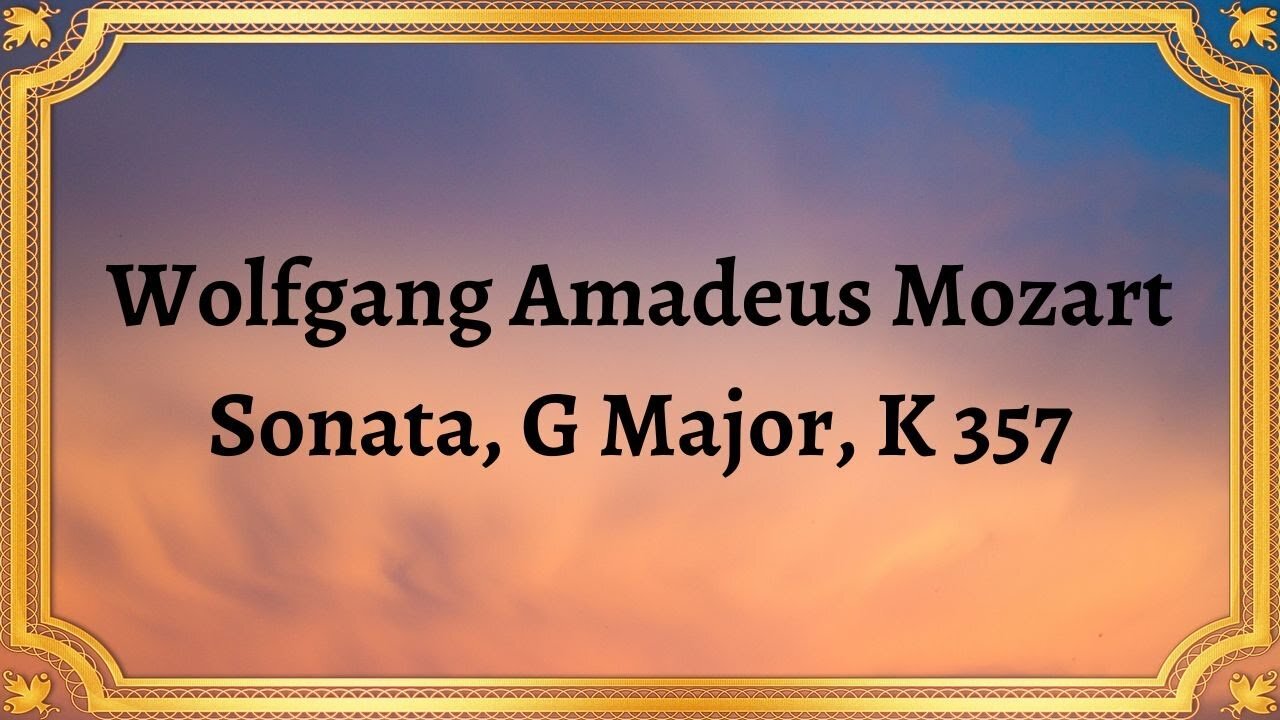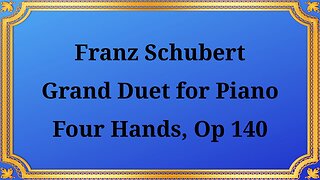Premium Only Content

Wolfgang Amadeus Mozart Sonata, G Major, K 357
#WolfgangAmadeusMozart
#SonatainGMajor
#Classicalmusic
#PianoFourHands
#Allegro
#Andante
#Sonataform
#Counterpoint
#Melody
#Harmony
For Piano Four Hands
Publication date 1950
Jörg Demus; Paul Badura-Skoda
Wolfgang Amadeus Mozart was one of the most prominent composers of the Classical era, and his Sonata in G Major, K 357, is one of the most popular pieces of music ever written. Composed in 1781, it is also known as Sonata for Piano Four-Hands.
The Sonata is a three-movement piece that highlights Mozart's skill in composing for two pianists playing on a single instrument. The first movement, marked Allegro, showcases Mozart's sense of melody and harmony that he was famous for. The second movement, marked Andante, provides a more subtle and tender experience, depicting the composer's lyrical sense and his ability to weave the music's melodies into lush harmonies. Finally, the piece moves into the third movement, Allegro, where Mozart's brilliance in writing for the piano takes center stage with complex rhythms and cadences.
Mozart's Sonata in G Major is considered one of his most delightful works, with an unmistakably peppy and buoyant character. The varied, yet cohesive melody and harmonic material are further complemented by the composer's deft use of forms, dynamics, and textures. The first movement, for example, is structured in sonata form with an exposition, development, and recapitulation. Mozart uses an elegant representation of harmony and counterpoint that foreshadows the music of the Romantic era that followed the classical period.
The Sonata's second movement is marked Andante and is for the most part written in the key of E minor. It exhibits Mozart's ability to steer away from complexity in his approach to instrumentation, form, and drama and instead create an atmosphere of peace and contemplation in the music. It is among the most beautiful interludes for four-hand piano in the repertoire.
The third movement, Allegro, is a fast-paced and energetic showcase of virtuosity with complex rhythms and interesting musical figures. Indeed, it is a perfect representation of the composer's lively and exuberant writing style that had a profound influence on the following eras of classical, romantic, and modern music.
In conclusion, Wolfgang Amadeus Mozart's Sonata in G Major, K 357, is a testament to his exceptional talent and creativity as a composer. The composition's complexity and structural integrity blend seamlessly with the music's emotional expressiveness, resulting in one of the most beautiful compositions in classical
You have the opportunity to support the channel https://destream.net/live/RadSiarAl/donate
-
 24:30
24:30
Classical music_Music Inspiration
10 days agoFranz Schubert Grand Duet for Piano Four Hands, Op. 140
451 -
 1:08:36
1:08:36
Man in America
15 hours agoUS, China, Israel & the Battle for the New World Order w/ Boone Cutler
89.3K65 -
 2:37:49
2:37:49
The Connect: With Johnny Mitchell
1 day ago $8.91 earnedBlackwater Mercenary EXPOSES Private Military War Secrets From The Middle East, Fueling Terrorism
42.7K40 -
 LIVE
LIVE
EXPBLESS
34 minutes agoA Rare Sunday Morning Stream (Avowed LIVE Gameplay)
327 watching -
 2:54:21
2:54:21
Total Horse Channel
2 days ago2025 Scottsdale Arabian Horse Show | Saturday Evening Session
87.3K6 -
 LIVE
LIVE
BigDaddySlick78's Live Gaming Channel
3 hours ago🔴 Call Of Duty Warzone Rebirth Island & Area 99 Live w/ Subs #callofduty #warzone #bo6 #cod
41 watching -
 22:39
22:39
The Mel K Show
11 hours agoMel K & Representative Brandon Gill | Our Constitutional Republic is Being Restored | 4-26-25
63.4K48 -
 4:17:17
4:17:17
VapinGamers
11 hours ago $6.28 earned📣 Fortnite Family Night! - Games and Dubs with BrianZGame - !rumbot
54.6K3 -
 4:27:48
4:27:48
ThePope_Live
9 hours agoLIVE - First time playing The Finals in over a YEAR! Still good? with @Arrowthorn
37.6K1 -
 3:06:26
3:06:26
TruthStream with Joe and Scott
15 hours agoRoundtable with Patriot Underground and News Treason Live 4/26 5pm pacific 8pm Eastern
67.7K38